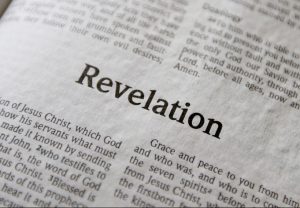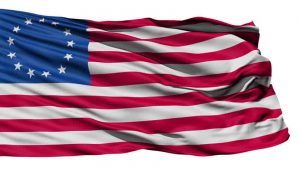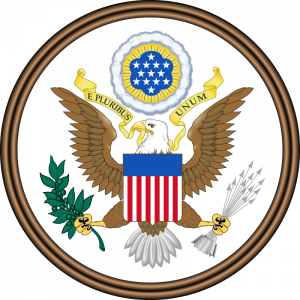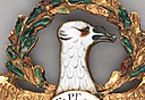Review
Our holiday Gospel message started in the Fall, during Halloween season. There, we discussed the true origins of death, and the remedy that was prophesied. God promised a conqueror at that time who would, one day, defeat our adversary (Gen. 3:14-15). If you haven’t yet read part 1 of this series, I suggest doing so before continuing.
During Christmas season, in the dead of Winter, we celebrated the arrival of this conqueror—the light who shined in the darkness. At a most spiritually dark time in history, Jesus arrived, offering bright hope to all. If you haven’t read part 2 of this series, I suggest doing so before continuing.
Then, during Easter season, we discussed the most important holiday on the Calendar—Easter. As Spring emerged from the grips of Winter, we were reminded of the life-giving redemption Jesus accomplished for us on the Cross. If you haven’t read part 3 of this series, I suggest doing so before continuing.
The Return of Christ
Now, we come to the fourth and final aspect of this year-long Gospel presentation—the Return of Christ. While Jesus has already accomplished our redemption and salvation on the Cross, many, including your kids, may be a little confused. For, when they look around, they see plainly that death and suffering are still around. Every kid with a computer, phone or television knows that God has not yet fixed the world. Sin and wickedness are everywhere. Scripture warns the devil is alive and actively preying on souls. “Be sober, be vigilant,” Peter says, “because your adversary the devil walks about like a roaring lion, seeking whom he may devour.” (1Pet. 5:8)
So what happened? Simply put, not every aspect of the good news has played out yet. The story is not over. The work of redemption is finished, but Jesus has not yet returned to earth to restore all things. We Christians, therefore, wait for the blessed hope, which is imminent, but not fulfilled. Paul said, “… live soberly, righteously, and godly in the present age, looking for the blessed hope and glorious appearing of our great God and Savior Jesus Christ…” (Titus 2:12-13)
Don’t Forget The Ending
 In our first article, I stressed the importance of starting at the beginning. I would say the same for the ending. Tell the full Gospel! There are some important aspects of Jesus that very few know about. Many know the works of his first coming, but few know the works of his second coming. They know of the sacrifice of the Lamb, but not the wrath of the Lamb (Rev. 6:16). They need to know both. For a more thorough handling of this topic see: Should Churches Avoid Genesis and Revelation?
In our first article, I stressed the importance of starting at the beginning. I would say the same for the ending. Tell the full Gospel! There are some important aspects of Jesus that very few know about. Many know the works of his first coming, but few know the works of his second coming. They know of the sacrifice of the Lamb, but not the wrath of the Lamb (Rev. 6:16). They need to know both. For a more thorough handling of this topic see: Should Churches Avoid Genesis and Revelation?
After Jesus ascended into the sky, an angel proclaimed,
Acts 1:11 “Men of Galilee,” … “why do you stand here looking into the sky? This same Jesus, who has been taken from you into heaven, will come back in the same way you have seen him go into heaven.”
 We also know from John’s testimony that, while few saw him leave, virtually all will see him return.
We also know from John’s testimony that, while few saw him leave, virtually all will see him return.
Rev. 1:7 Behold, He is coming with clouds, and every eye will see Him, even they who pierced Him. And all the tribes of the earth will mourn because of Him. Even so, Amen.
We don’t know exactly how this will play out, but with TV, streaming video and other technologies, it’s easy to see how the entire world will be watching. John also revealed that, unlike his departure, Christ’s return will be spectacular.
Rev. 19:6 Then I heard what sounded like a great multitude, like the roar of rushing waters and like loud peals of thunder, shouting: “Hallelujah! For our Lord God Almighty reigns.
I think it’s safe to say, we should expect fireworks! Perhaps, you can see where I’m headed.
Independence Day
 Independence Day is the celebration of the establishment of America. Every year, dazzling displays of fireworks fill American skies to remind us of the war of our origins—the Revolutionary War. Others think of subsequent wars that were necessary to sustain us until now—including a war of repentance—the Civil War. I love this symbolism and the gratitude it fosters.
Independence Day is the celebration of the establishment of America. Every year, dazzling displays of fireworks fill American skies to remind us of the war of our origins—the Revolutionary War. Others think of subsequent wars that were necessary to sustain us until now—including a war of repentance—the Civil War. I love this symbolism and the gratitude it fosters.
For me, however, the symbolism goes further. These celebrations not only take me back to the past, but also forward to the future. Fireworks—the likes of which the world has never seen—are coming. Christian patriots, like myself, love America, but know its limitations. We are citizens of America, but also citizens of the coming Kingdom—a better kingdom—one that will be everything our nation desires to be, but can’t due to our fleshly, human natures (Rom. 7).
Independence Day, for me, therefore, has dual symbolism. It’s a time to honor my nation, and also look forward to the coming Kingdom. It’s also the fourth and final holiday of my year-long Gospel presentation.
- The Fall and the Promise of Christ – Halloween
- The Arrival of Christ – Christmas
- The Cross of Christ – Easter
- The Return of Christ – Independence Day
A Coming Revolution
I see ID4 as an opportunity to, not only explain our great nation but, also, the Kingdom that is to come. Jesus created the nations at Babel for our good, when he thwarted the first potential, centralized global empire. At that time, he separated the early post-diluvian families by confusing their languages, forcing them to spread out and form the early nations of the earth (Gen. 11). Satan has been attempting to globalize the world ever since, through imperialism and global politics, but unsuccessfully. John tells us the antichrist will have some success at globalization during the Tribulation (Rev. 13:7), but, ultimately, will be thwarted, as well. Only Christ will successfully establish a long-term world kingdom when he returns. He will rule the nations righteously, at that time, for a thousand years (Rev. 20:2-7), preceding the eternal kingdom that will follow shortly after. For more on this, see: What is the Millennium? 7 Answers to 7 Questions by David Jeremiah.
Thus, when celebrating my nation’s origins, it makes sense, at least for me, to look ahead. I’m thankful for a good (but flawed) nation, but more thankful for the perfect Kingdom on the horizon. Thy Kingdom come!
Using Independence Day Symbols
I recommend explaining these truths to your kids on the Fourth of July. Learn about the familiar symbols we see on this day, and use them for good. Scripture has a lot to say about the nations, both historically and eschatologically. Below are some suggestions for your consideration.
Fireworks
 As mentioned above, I can’t think of a better symbol to explain the return of Christ than fireworks. Primarily, they remind us of the Revolutionary War that preceded our founding. I wouldn’t want to remove or diminish this symbolism in any way. Christians, of all people, should understand the importance of showing gratitude for sacrifice. America has its sins, but it is, by far, the best place to live in the world today. The proof of this is countless immigrants, of every shade and ethnicity, trying to get here by any means possible (even illegally). Furthermore, Paul commanded us to show respect and honor to our nation with “taxes, customs, fear and honor” (Rom. 13:7). Patriotism is a good testimony, and the lack thereof can be a bad testimony.
As mentioned above, I can’t think of a better symbol to explain the return of Christ than fireworks. Primarily, they remind us of the Revolutionary War that preceded our founding. I wouldn’t want to remove or diminish this symbolism in any way. Christians, of all people, should understand the importance of showing gratitude for sacrifice. America has its sins, but it is, by far, the best place to live in the world today. The proof of this is countless immigrants, of every shade and ethnicity, trying to get here by any means possible (even illegally). Furthermore, Paul commanded us to show respect and honor to our nation with “taxes, customs, fear and honor” (Rom. 13:7). Patriotism is a good testimony, and the lack thereof can be a bad testimony.
That said, I also recommend telling your kids of a future Kingdom that will be even better (infinitely better). These same fireworks can remind us of the spectacular events that will precede the establishment of the Millennial Kingdom. Jesus said,
Matt. 24:27 For as the lightning comes from the east and flashes to the west, so also will the coming of the Son of Man be.
John revealed,
Rev. 19:6 Then I heard what sounded like a great multitude, like the roar of rushing waters and like loud peals of thunder, shouting: “Hallelujah! For our Lord God Almighty reigns. 7 Let us rejoice and be glad and give him glory! For the wedding of the Lamb has come, and his bride has made herself ready.
It will be unlike any event ever witnessed in history. Tell your kids of fireworks of the past, and of those coming in the future. Remind them every year!
Red, White and Blue
 Like all holidays, the Fourth of July has its distinctive colors—namely red, white and blue. While American, patriotic colors have no official meaning, we do have good historical tradition to draw from. Per the website, Flags of Valor,
Like all holidays, the Fourth of July has its distinctive colors—namely red, white and blue. While American, patriotic colors have no official meaning, we do have good historical tradition to draw from. Per the website, Flags of Valor,
No federal law or rule offers an official reason for the flag’s colors. We do have, however, the words of Charles Thomson the secretary of the Continental Congress, who was a key player in the design of the Great Seal of the United States. Of the red, white and blue colors on the Great Seal he said “White signifies purity and innocence, Red, hardiness & valor, and Blue, the color of the Chief signifies vigilance, perseverance & justice.” (source)
Purity, valor and justice sound like pretty good values to me. We, as American Christians, need to strive for purity and innocence (white). Jesus told us to be “shrewd as snakes and as innocent as doves.” (Mat. 10:16). We also need to appreciate the valor that has kept our nation safe and free. “Greater love has no one than this, than to lay down one’s life for his friends.” (John 15:13) We can’t ever forget the valor and sacrifice of our soldiers, which has kept our enemies at bay (red). We, also, as American Christians, need to appreciate the value of truth and justice. We need to be willing to fight evil, particularly evil ideas (and there are a lot of them floating around today). If Christians don’t speak up for truth and justice, who will? (blue)
All this said, only the Millennial Kingdom will meet God’s perfect governing standard. Everyone is looking for utopia, and they’re disappointed at every turn. It’s not coming and not possible with fallen men at the helm. It will come with Christ. The Millennial Kingdom will be pure in every sense (white). Jesus will defeat his enemies quickly and decisively (red), and rule with perfect justice and mercy (blue). Thy Kingdom come!
The American Flag
 Known, also, as the Stars and Stripes and Old Glory, the American Flag has an extensive and interesting history. On June 14, 1777,
Known, also, as the Stars and Stripes and Old Glory, the American Flag has an extensive and interesting history. On June 14, 1777,
…the Continental Congress adopted a resolution stating: “Resolved, That the flag of the United States be thirteen stripes, alternate red and white; that the union be thirteen stars, white in a blue field, representing a new Constellation.” (source)
 Later in 1818, Congress passed a new law requiring a new star to be added on July 4th, after the entrance of each new state to the union. After this, many different star arrangements emerged throughout the years, as states were added. The basic essence of the design, however, remained the same. Our current 50-star flag come to be in 1959 when the last state of the union, Hawaii, was added.
Later in 1818, Congress passed a new law requiring a new star to be added on July 4th, after the entrance of each new state to the union. After this, many different star arrangements emerged throughout the years, as states were added. The basic essence of the design, however, remained the same. Our current 50-star flag come to be in 1959 when the last state of the union, Hawaii, was added.
It’s also interesting that the precise 50 star arrangement was designed by a high school student. You can read that story here: THE HIGH SCHOOLER WHO DESIGNED THE 50-STAR AMERICAN FLAG
Stars and Stripes Symbolism
There are no official symbolic meanings ascribed to the stars and stripes, but there are some interesting traditions. Per World Atlas:
…there is another interpretation of the stars and the stripes, which is not known to many people. According to 1977 the House of Representatives book, it states that “the star symbolizes heavens and the divine goal that humans have aspired from time immemorial.” The stripes symbolize the rays of light originating from the sun.
America has always been a heaven-minded nation. To this day, we have the most churches, the most missionaries, the most charities, etc. The list goes on and on. No one can deny that Christianity has thrived in America. I pray our tradition of religious liberty continues (though it’s under siege). I also pray that we, as American citizens, continue to look upward (stars), remaining one nation, under God. Likewise, may God continue to shine his grace and mercy down on us (stripes).
As always, however, when we’re disappointed with our nation, let us never lose site of the Kingdom that is to come, that will never let God’s people down. Thy Kingdom come.
The American Bald Eagle
Interestingly, we almost had a different national symbol……..well, sort of. Benjamin Franklin didn’t like the bald eagle. He noted, in a letter to his daughter, that the bird in the badge of the Society of the Cincinnati Medal, actually looked more like a turkey than an eagle. He, then, went on to explain how he would have preferred the turkey.
I am on this account not displeased that the Figure is not known as a Bald Eagle, but looks more like a Turkey. For the Truth the Turkey is in Comparison a much more respectable Bird, and withal a true original Native of America… He is besides, though a little vain & silly, a Bird of Courage, and would not hesitate to attack a Grenadier of the British Guards who should presume to invade his Farm Yard with a red Coat on.
Sensing the sarcasm, I wouldn’t say he was actually advocating for the turkey, but rather venting over his dislike of the Bald Eagle. From the same letter:
For my own part I wish the Bald Eagle had not been chosen the Representative of our Country. He is a Bird of bad moral Character. He does not get his Living honestly. You may have seen him perched on some dead Tree near the River, where, too lazy to fish for himself, he watches the Labour of the Fishing Hawk; and when that diligent Bird has at length taken a Fish, and is bearing it to his Nest for the Support of his Mate and young Ones, the Bald Eagle pursues him and takes it from him. (source)
Keep in mind these were the off-the-record musings of a man conversing with his daughter. We probably shouldn’t take it too seriously. Regardless, I disagree with the sentiment. The Bald Eagle is, by far, a superior symbol. Scripture agrees.
Theological Symbolism of the Eagle
 God used the eagle as a symbolic description of the Exodus.
God used the eagle as a symbolic description of the Exodus.
Ex. 19:3 And Moses went up to God, and the LORD called to him from the mountain, saying, “Thus you shall say to the house of Jacob, and tell the children of Israel: 4 “You have seen what I did to the Egyptians, and how I bore you on eagles’ wings and brought you to Myself.
He, also, used the eagle as a symbol of Himself regarding his relationship with Israel—a mother eagle caring for her young (Deut. 32:9-13). The eagle is also a symbol of speed (2Sam. 1:23) and the majestic handiwork of God (Job 39:27-30). He is a symbol of renewal (Psa. 103:5, Is. 40:31) and amazement (Prov. 30:18-19). Eagles are symbols of God’s wrath and warnings to repent (Jer. 4:13), and God’s wrath toward Israel’s enemies (Jer. 48:40, 49:22, Rev. 8:13). They are symbolic depictions of holy cherubs (Ezek. 1, Rev. 4:4-9). He is also a symbol of rescue for Israel during the Tribulation (Rev. 12:13-14).
No disrespect to Mr. Franklin, but his turkey superiority theory just doesn’t fly. May God continue to deliver our nation on eagles’ wings, and may we, as a country, live up to the goodness of this symbol.
The Great Seal
 I’d be remiss not mentioning the great seal, which is another one of our prominent nation symbols. It and similar seals are prominent on US documents and currency. They, generally, feature the American Bald Eagle with 13 arrows in his left talon and an olive branch with 13 leaves and olives in his right. Peace through strength is a phrase used by former President Ronald Reagan and this symbolism of olive branches (peace) and arrows (strength) conveys this idea well. American seals also typically feature the phrase e pluribus unum (out of many one).
I’d be remiss not mentioning the great seal, which is another one of our prominent nation symbols. It and similar seals are prominent on US documents and currency. They, generally, feature the American Bald Eagle with 13 arrows in his left talon and an olive branch with 13 leaves and olives in his right. Peace through strength is a phrase used by former President Ronald Reagan and this symbolism of olive branches (peace) and arrows (strength) conveys this idea well. American seals also typically feature the phrase e pluribus unum (out of many one).
Originally, this conveyed the idea of 13 distinct states united as one, and, eventually, came to represent the idea of many cultures melting into one. America is a rare success story as an immigrant nation. Foes from within don’t like the idea of a melting pot, or assimilation, but it’s been crucial to our survival. We are different, yet also one. (I deal with this extensively in the article: Should Christians Embrace Nationalism? A Question of Origins).
It’s also worth noting that Christ’s Kingdom will be the ultimate e pluribus unum, consisting of all the peoples of the earth. It will be a time of assimilation and unity, like never before. Even the creatures of the earth will be at peace at that time—the wolf with the lamb, the leopard with the goat, the calf with the lion (Is. 11:6). Isaiah tells us cows, bears, lions and oxen will graze together and their young will lie down together. Even vipers and infants will be at peace at that time (Is. 11:7-8). e pluribus unum is a righteous goal for America, but a guaranteed reality in the coming Kingdom.
For more information on facts and history of the Great Seal, see the Britannica article: Great Seal of the United States.
Summer
July 4th occurs right after the Summer Solstice, providing even more usable symbolism. If you’ve followed our previous articles, all the seasons of the year offer rich, usable theological symbolism. Fall (Halloween) reminded us of the Fall of Adam, when darkness first began to overtake the light (see article 1). Winter (Christmas) reminded us of the depth of spiritual darkness the world had plunged into when the light of the world arrived (see article 2). Spring (Easter) reminded us of Christ’s victory on the Cross, when he brought redemption and life to the dead. Light begins to overtake the darkness in Spring, bringing forth life from the dead of Winter (see article 3).
 Likewise, Summer can be used as a metaphor for the coming restoration. Summer is characterized by warmth, sunshine, long days, short nights and bountiful crops. It’s a time of rest and fun for those on school break. It’s a time for travel and vacations.
Likewise, Summer can be used as a metaphor for the coming restoration. Summer is characterized by warmth, sunshine, long days, short nights and bountiful crops. It’s a time of rest and fun for those on school break. It’s a time for travel and vacations.
The Millennial Kingdom, likewise, will be a time of rest, joy and happiness like no one has ever experienced (except Adam and Eve in the Garden). This metaphorical Summer has not yet arrived, but it is coming. Study the Millennial Kingdom and talk to your kids about it. For more information, see: What is the Millennial Kingdom, and should it be understood literally?
 For us, Summer/Patriotic season begins on Memorial day, the last Monday of of May, just prior to the first Summer month of June. This is, generally, when you see flags going up and staying up all Summer. This long season generally ends on September 11th when we remember the attack on the Twin Towers. After that, Fall season seems to come into full swing with Halloween themes taking over stores and theme parks.
For us, Summer/Patriotic season begins on Memorial day, the last Monday of of May, just prior to the first Summer month of June. This is, generally, when you see flags going up and staying up all Summer. This long season generally ends on September 11th when we remember the attack on the Twin Towers. After that, Fall season seems to come into full swing with Halloween themes taking over stores and theme parks.
Using Independence Day Traditions
Fireworks Shows
 The best fireworks shows are usually on the 4th, but many theme parks fire them up a week prior and several days after. You may, also, want to consider taking a 4th of July vacation to a city known for their fireworks. Enjoy them, and talk about their patriotic and theological symbolism. Don’t let them go to waste.
The best fireworks shows are usually on the 4th, but many theme parks fire them up a week prior and several days after. You may, also, want to consider taking a 4th of July vacation to a city known for their fireworks. Enjoy them, and talk about their patriotic and theological symbolism. Don’t let them go to waste.
4th of July Barbecue
Feasting is an essential aspect of all holiday celebrations. In fact, the terms feast and holy day are often interchangeable in Scripture.
Pull out all the stops next 4th of July. Fire up your grill and enjoy God’s Summer bounty. Then, remind your kids that a better feast is coming.
Rev. 3:20 Behold, I stand at the door and knock. If anyone hears My voice and opens the door, I will come in to him and dine with him, and he with Me.
I believe this is likely an allusion to the marriage supper of the Lamb (Rev. 19:9), which all believers will partake of one day. For more on this, see: What is the marriage supper of the Lamb?
Listen to Patriotic Music
Another way to celebrate Independence Day is to listen to patriotic songs. Here are some of my favorites.
- “America The Beautiful” Ray Charles
- “God Bless America” LeAnn Rimes
- “God Bless the USA” Lee Greenwood
- “Where the Stars and Stripes and the Eagles Fly” Aaron Tippin
- “Chicken Fried” Zack Brown Band
- “Pink Houses” John Mellencamp
- “Battle Hymn of the Republic” SHeDAISY
If you haven’t yet heard SHeDAISY’s rendering of Battle Hymn of the Republic, I can’t recommend it enough. Consider the apocalyptic words of this great post-Civil War song.
Mine eyes have seen the glory of the coming of the Lord;
he is trampling out the vintage where the grapes of wrath are stored;
he hath loosed the fateful lightning of his terrible swift sword;
his truth is marching on.He has sounded forth the trumpet that shall never call retreat;
he is sifting out the hearts of all before his judgment seat.
O be swift, my soul, to answer him; be jubilant, my feet!
Our God is marching on.
If that song doesn’t get you thinking about the second coming, nothing will. The wrath of the Lamb is coming, and the world needs to hear about it. You can read about the song’s background and history here: The Song That Marches On: History of the Battle Hymn of the Republic
Objections and Concerns
Patriotism is Idolatry
We are citizens of the Kingdom, not citizens of America!
While perhaps good intentioned, this is biblically flawed. Paul commanded us to respect and honor our nation, (Romans 13:1-7) and he never once renounced his national identity as a Roman citizen.
Acts 16:37 But Paul said to the officers: “They beat us publicly without a trial, even though we are Roman citizens, and threw us into prison. And now do they want to get rid of us quietly? No! Let them come themselves and escort us out.”
(See also: Acts 16:37-38, Acts 22:25-29, Acts 23:27) Paul also appealed to Roman law and Caesar on occasion (Acts 25:8-12, Acts 26:32, Acts 28:19).
I suspicion those making this objection may be missing the entire point of the Church. Scripture makes it clear the Church is not a nation like Israel. It is rather a community of believers sent out to abide in other nations, and live under their authority. As good citizens, we become a testimony to our fellow citizens. Anti-patriotism often has the opposite effect, conveying ingratitude. Don’t fall into this bad thinking. (Further reading: Should Christians Embrace Nationalism? A Question of Origins)
America Has Illegitimate Origins
America is the product of a sinful rebellion against Great Britain, and, therefore, should not be honored.
Some theologians hold that the American Revolution violated Paul’s teachings in Romans 13 to obey your governing leaders. This may or may not be the case, but it’s irrelevant to the issue of patriotism and honor. Paul was a Roman citizen, and Rome was, by no means, a saintly nation with impeccably righteous origins. Yet, as a Roman citizen, Paul penned his instructions to respect and honor your national governments.
That said, the premise of the above argument may be flawed. Yes, God ordained the various governments of the world, but this was done in the wake of Babel to affirm the nations who are spread out all over the earth. God separated the nations at Babel for our good. Attempts at global domination, therefore, by empires like Babylon, Persia, Greece, Rome, England, Germany, etc., were doomed to fail, and I believe God ordained their failures. While I can’t be dogmatic, I highly doubt Paul’s commands in Romans 13 were intended to aid global conquerers, who are reaching out with their tentacles all over the earth. Nor to I think Romans 13 is a prohibition against throwing off the oppression of foreign empire, when it becomes possible. Was Poland in sin for fighting back against Germany in 1945, after Germany successfully invaded and took control in 1939? I don’t think this was Paul’s point. I could be wrong.
Regardless, America is a legitimate nation, and American Christians owe it respect and honor.
America is Evil!
We cannot participate in the patriotic holidays of a nation that has engaged in wickedness like slavery!
Paul said, “for all have sinned and fall short of the glory of God…” (Rom. 3:23) When I hear the above objection, I can’t help but think of Paul, who was a Roman citizen. Rome was, by no means, a righteous nation. I’ve heard estimates that up to 50% of its population, at one time, were slaves. Yet, Paul honored and respected his country (Rom. 13:7). We need to do the same.
No one can deny America has its sins and blemishes. The slavery and racism our country engaged in was evil, and we paid a terrible price for it during the Civil War. Murdering the unborn is also evil. Hitler and Stalin, combined, murdered approximately 30 million people. We’ve doubled this in abortions—60 million and counting—since Roe v Wade in 1974.
No one is denying the sinful nature of our nation (and all nations), and no one is saying we should endorse its sins. But, we must honor the institutions and authorities God has ordained. Showing respect and honor to your nation is not an endorsement of its sins, and conversely, calling out its sins is not an act of disrespect or dishonor. We can do this respectfully, and we should. We should also point out the good, and there is a lot of it.
The Millennial Kingdom is Not Literal
But, I don’t believe in a literal thousand year Millennial Kingdom on earth!
Good men disagree with me on this. I read Scripture straightforwardly and literally, particularly the books of Genesis and Revelation. Premillennialism and pretribulationism, in my view, are the most literal approaches to end-times prophecy. The best books on these subjects, in my humble opinion, are by Ron Rhodes. I recommend: The End Times in Chronological Order: A Complete Overview to Understanding Bible Prophecy, The 8 Great Debates of Bible Prophecy: Understanding the Ongoing Controversies, 40 Days Through Revelation: Uncovering the Mystery of the End Times. He’s written many others, as well. You can view them here.
That said, I wouldn’t put interpreting Revelation in the same category as interpreting Genesis. Compromised views of Genesis cause much more theological harm (See: How Important Is Genesis 1-3? by John MacArthur, Does Genesis Matter by Ken Ham). I would say, however, that it’s important to get Revelation right, especially considering the blessing that’s at stake.
Rev. 1:3 Blessed is he who reads and those who hear the words of this prophecy, and keep those things which are written in it; for the time is near.
But, many see it different. If this is you, we still agree on the future return of Christ, as all orthodox Christians hold to this. Fireworks, therefore, could be a symbol of the second coming for all believers, if they choose to use it in this way.
Final Thought
The easiest Gospel to understand is the full Gospel. Don’t rob it of its beginning and ending context. The message begins in Genesis, where God created the world and pronounced it “very good.” History took a dire turn soon after, when Adam sinned and brought corruption and death into the world. God then revealed his plan of redemption to send a conqueror—a Seed—who would one day crush our adversary (Gen. 3:15). Thousands of years later the Seed arrived and died for our sins on the Cross. He, then, rose again and ascended to the heavens. Those who trust in him have eternal life, and will enter his Kingdom when he returns. Thy Kingdom come!
Tell this full Gospel to your kids (and to anyone else who will listen). Explain it through holidays. Furthermore, enjoy the holidays. May they become a blessing like never before.
Previous Articles:
Explaining the Gospel through Holidays – Part 1: Halloween
The Fall and the Promise of Christ
Explaining the Gospel through Holidays – Part 2: Christmas
The Arrival of Christ
Explaining the Gospel through Holidays – Part 3: Easter
The Cross of Christ




Leave a Comment
You must be logged in to post a comment.